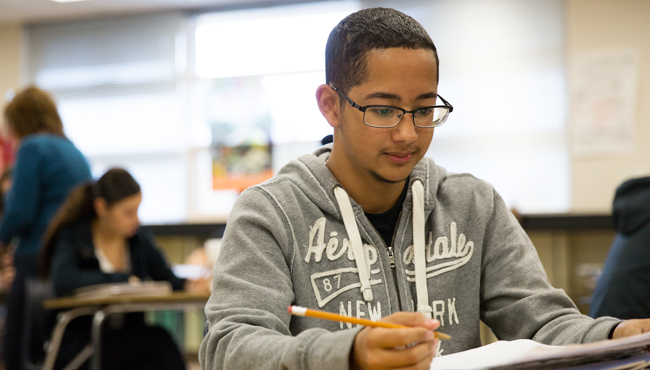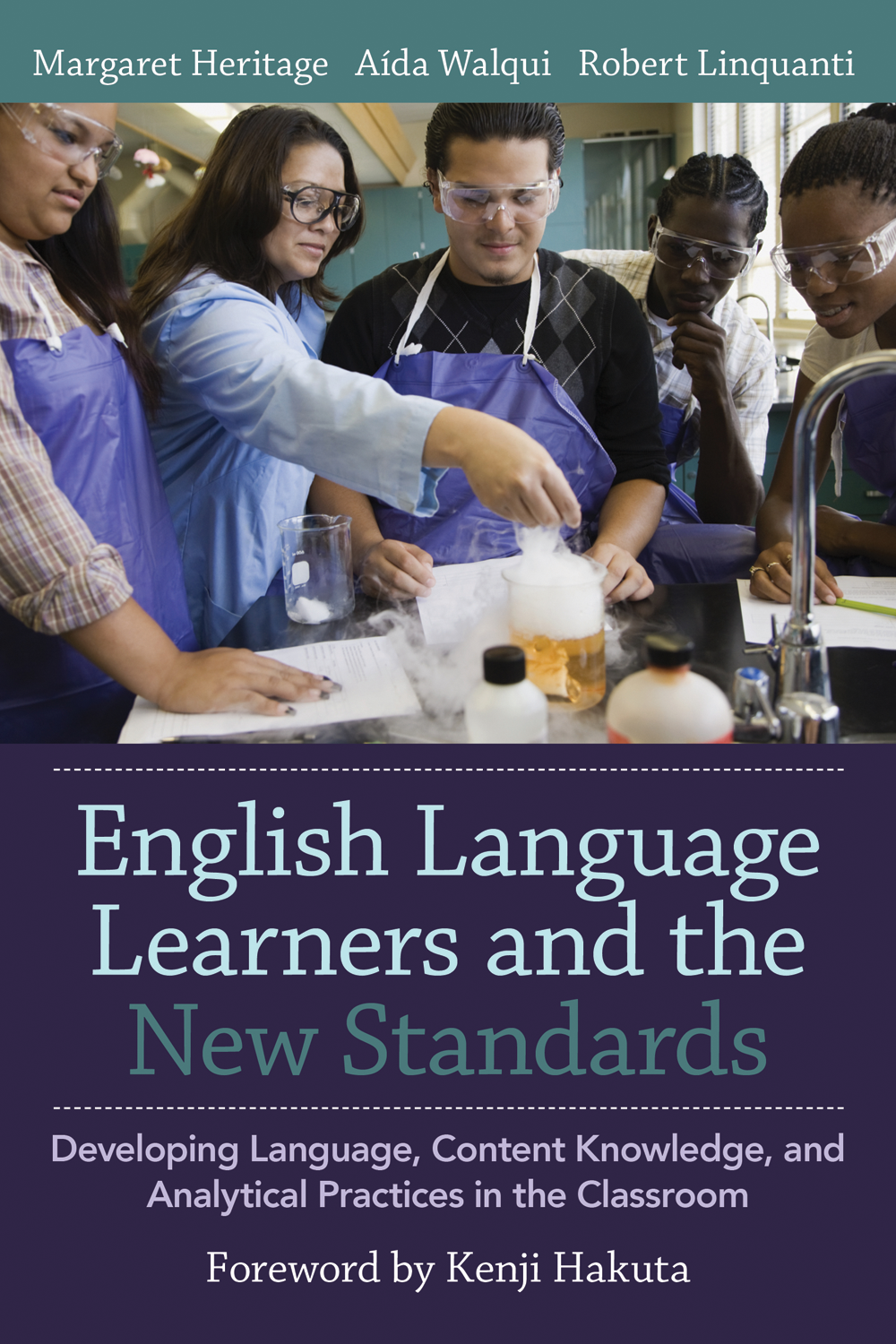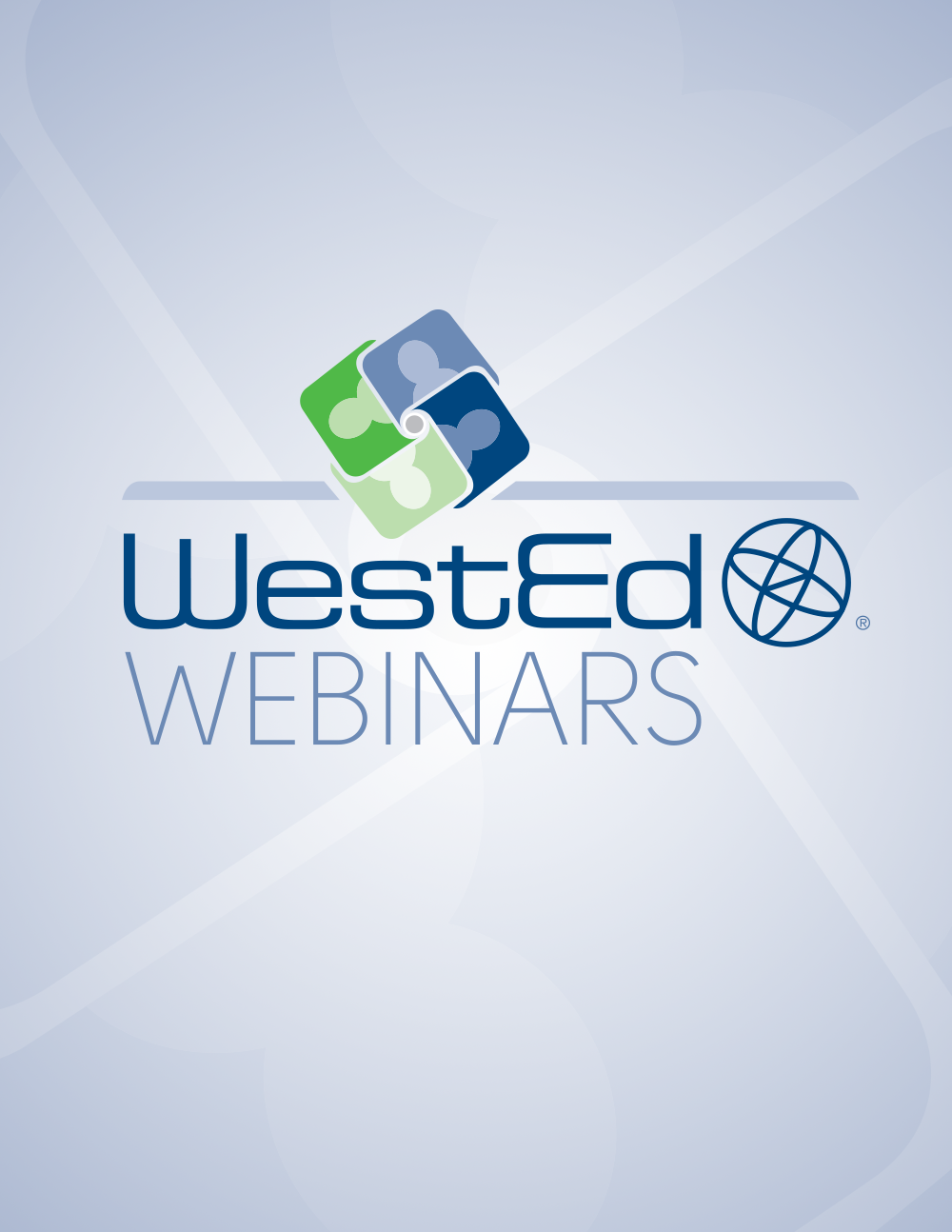English Language Learners Need New Pedagogy to Meet the Latest Standards
Posted on

“The face of the country is changing dramatically,” says Aída Walqui, director of WestEd’s Teacher Professional Development Program. According to data from the Economic Policy Institute, for example, the percentage of Latinos in the U.S. will increase by more than 300 percent in the next 15 years.
Many in this growing population are English language learners, and too many of these students keep underperforming, Walqui says. “It’s not that these students aren’t talented or don’t have immense potential. It’s that our education system, following standard approaches, doesn’t adequately support their potential to develop.”
Along with WestEd colleagues Margaret Heritage, senior scientist, and Robert Linquanti, project director and senior researcher, Walqui hopes to move the pedagogy in a more positive direction. The three jointly authored English Language Learners and the New Standards: Developing Language, Content Knowledge, and Analytical Practices in the Classroom, published by Harvard Education Press in May 2015.
Drawing on complementary specialties and perspectives — Heritage’s expertise with formative assessment, Linquanti’s policy and accountability background, and Walqui’s research-based advocacy for English learners and teacher professional development — the authors describe instructional practices and supportive policies that can best enhance current education reforms. They provide practical examples for how to support individual student learning, illustrated by classroom vignettes — all drawn from each author’s respective experience working with teachers.
New standards bring more challenging language demands
The book is a timely response to the latest standards for college- and career-readiness and to the new, more rigorous assessment systems flowing from those standards. As with previous waves of reform, the new standards and assessments have triggered a systemwide emphasis on accountability. But this time, the authors argue, the reforms must also foster the instructional practices needed for English language learners to succeed in meeting the standards.
Linquanti notes that the latest standards encourage more collaborative, interpretive, and productive uses of language such as having students “argue from evidence” or “discern key points and request clarification,” whereas previous standards often had simpler demands for declarative knowledge and factual recall. “This shift has given rise to more focus on students’ meaning-making and using language to get things done,” he says.
All teachers need to see themselves as teachers of language use — a concept foundational to successful implementation of new standards.
However, such heightened cognitive and linguistic demands are challenging for all learners and especially for those students also learning English, says Heritage. “In the context of these more rigorous expectations, it’s clear the pedagogical status quo won’t get them where they need to be.”
Regardless of whether educators are excited or apprehensive about the new standards, says Linquanti, the standards will necessitate a shift away from underlying, outmoded theories of how students learn language.
Needed: Shared responsibility for language learning
A strong theme in the book is that teachers need to move away from the idea that English language learners must first learn the language and then content. “In fact, students acquire language and content simultaneously,” explains Heritage.
This means all teachers need to see themselves as teachers of language use — a concept foundational to successful implementation of new standards, says Linquanti. The challenge is that many teachers have thought of English language development as something that happens for English learners at only one time of day or with just one teacher.
“But every teacher teaches students how to speak and read and write in their discipline — even in math, where reading is very different from reading short stories in a language arts class, for example,” says Walqui. “For teachers to realize this can entail a major reorientation, a monumental shift, one that can’t be accomplished overnight.”
To be successful with English language learners, teachers need to engage them in language-rich practices, appropriate to the discipline. Doing so means focusing less exclusively on fluency and grammatically correct sentences, and more on comprehension and communication, says Walqui. She notes that teachers also need to reorient away from teaching isolated pieces of content and toward teaching how to make connections, ask questions, and solve problems — an organic, deliberate process that builds deeper understanding and more sophisticated language use in students.
“You can’t separate language from analytical or disciplinary practices and conceptual development,” adds Linquanti. Even when language is the primary focus of instruction, as in English as a Second Language (ESL) classes, activities should still draw from and apply to what students are engaged in during the rest of the day, he says. Teachers of all subjects should collaborate as needed. “If ESL teachers know what other classes are focusing on, they can create opportunities to stretch students’ language in the service of learning content, just as content teachers have students use language extensively to carry out content practices.”
Another shift in pedagogy requires thinking of language learning as a process that is social and active rather than individual and passive, says Linquanti. English learners can best use and grow their English language skills in interactive settings.
“We need classrooms where students are actively engaged in discussing, writing, doing, and notating, as well as listening,” notes Walqui, “because it is through participation in those activities that they’ll be able to meet the new standards and develop their full potential.”
Key component of effective pedagogy: Formative assessment
At the heart of this new pedagogy, says Heritage, is formative assessment. Teachers engaged in formative assessment do not simply assess achievement at the end of a sequence of learning. Instead, they intentionally elicit evidence about how students’ thinking and language use are evolving during the learning process, and they act on what they hear and see in real time. For teachers of English language learners, this refocus also means continually attending to the emergence of language and responding in ways that advance language learning.
Useful formative assessment also involves students in the process — enhancing their agency in the learning process, she adds. “Involving students in formative assessment can help them become skilled at self-monitoring, knowing whether they’re stuck or struggling, and provides a repertoire of ideas and strategies to make progress.”
Teachers can use formative assessment most effectively when they know their students well, including knowing about English language learners’ native languages, cultures, early childhood experiences, and family histories, says Heritage. “This knowledge goes a long way toward addressing assumptions that English language learners are a homogenous group who all learn in exactly the same way.”
Also needed: Support for teachers to better serve English language learners
Unfortunately, the system has de-skilled teachers in the art of gathering and responding to ongoing evidence during the flow of instruction, says Linquanti. “Our system tells them it’s all about teach, test, and remediate, when it should really be about assess and assist, assess and assist. There’s been so much focus on testing events we’ve forgotten that the classroom is where learning occurs.”
Teachers will require concerted support to learn skills like how to effectively implement formative assessment and how to consciously embed language learning in all disciplines, says Walqui. “We know from every other advanced country in the world that teachers spend hours a day working on their craft — collaborating with peers, discussing student work, and analyzing results to decide what’s next.”
Teachers and administrators also need the authority to actively shape education policy, says Linquanti. “A lot of policy has been very prescriptive about how teachers are supposed to teach English language learners.” As Linquanti writes in the book’s final chapter, “. . . we need to flip the prevailing paradigm of school improvement. That is, instead of attempting to improve instructional practice from the outside in with external mandates and controls, we need to create knowledge and cultivate expert practice from within local settings.”
Although the pedagogical changes recommended by the authors require enormous shifts, says Linquanti, good results with English language learners can provide a kind of leading indicator. “If the practices we advocate in the book are successful with English learners, they’re very likely to be effective with all students. We will succeed or fail in implementing the new standards for all students based on the quality of teaching and learning that goes on in the classroom.”


